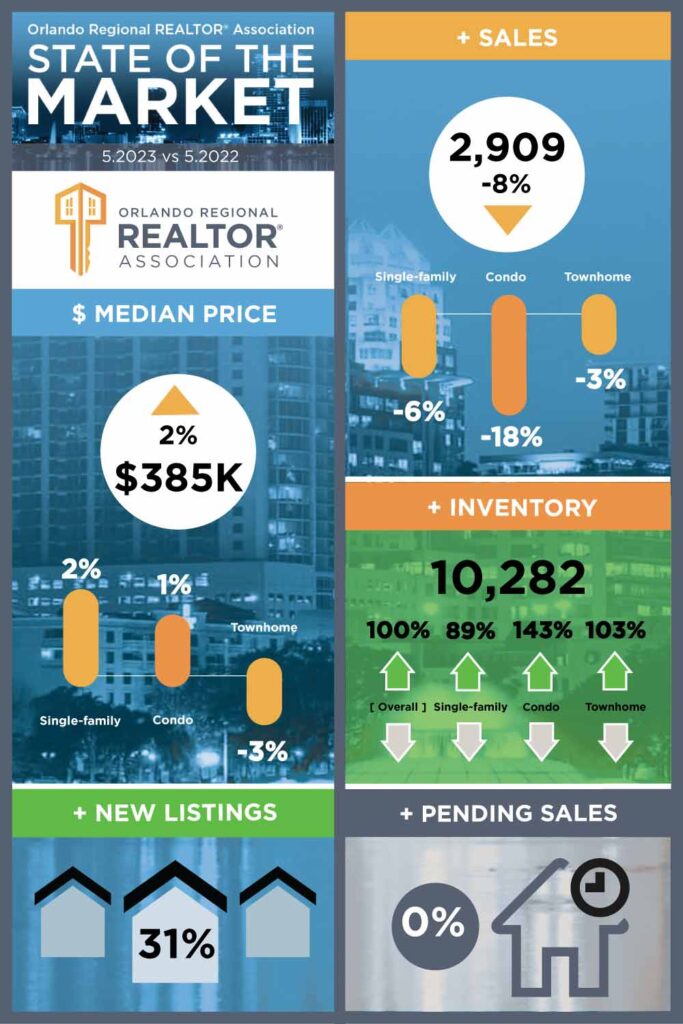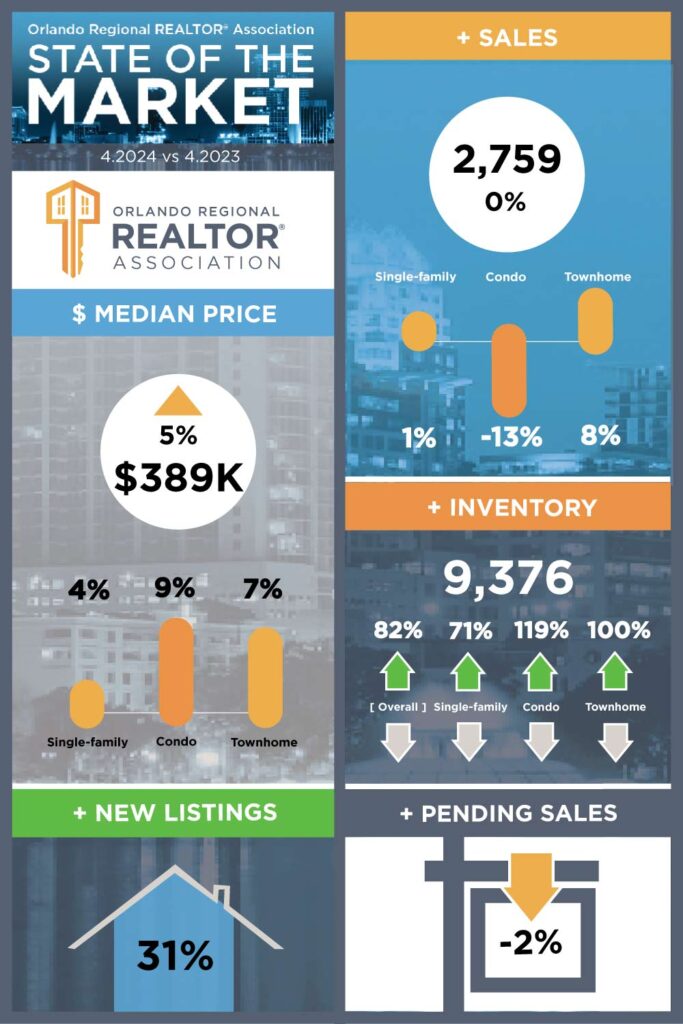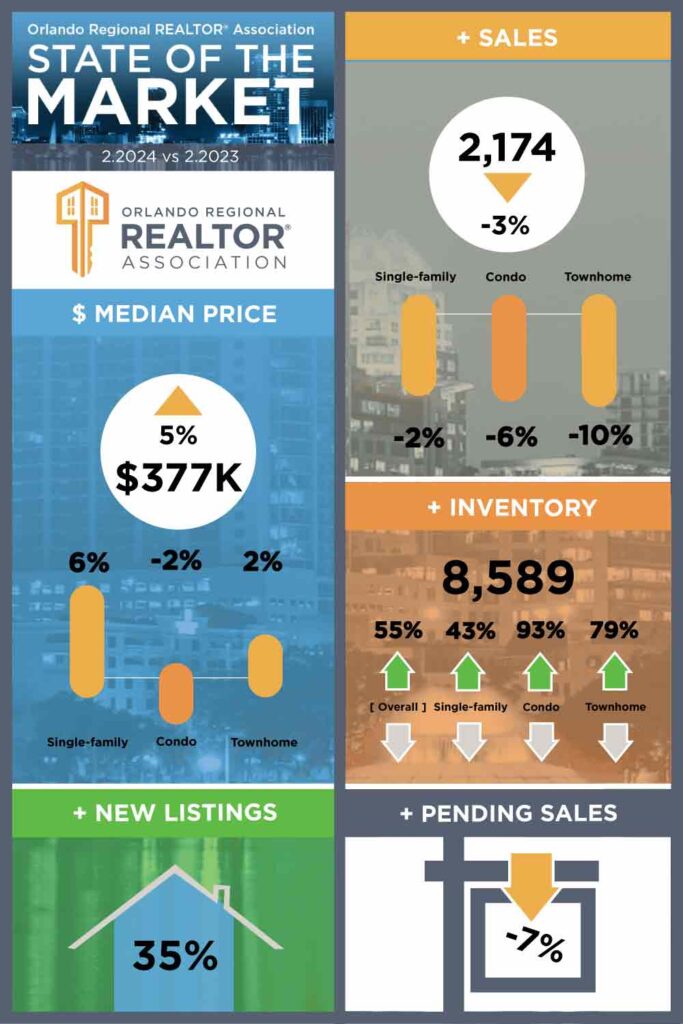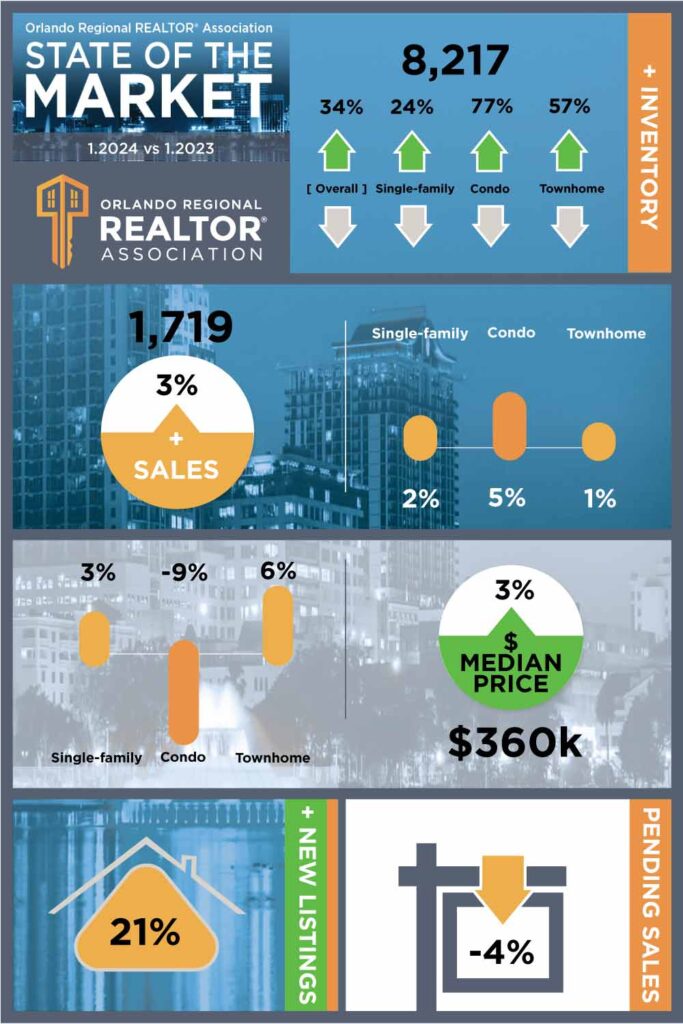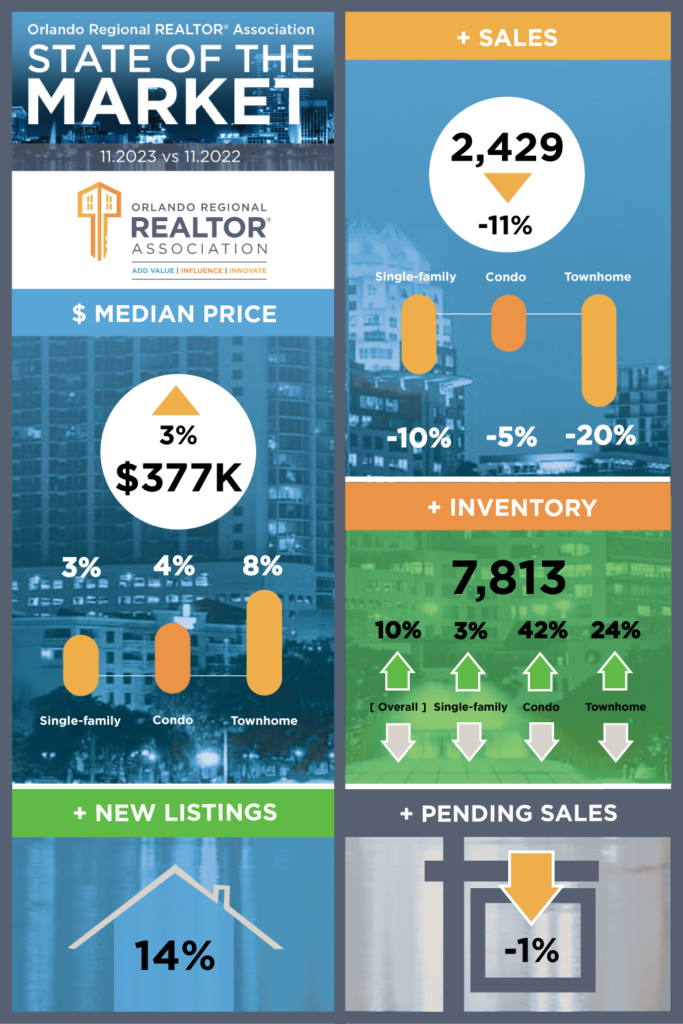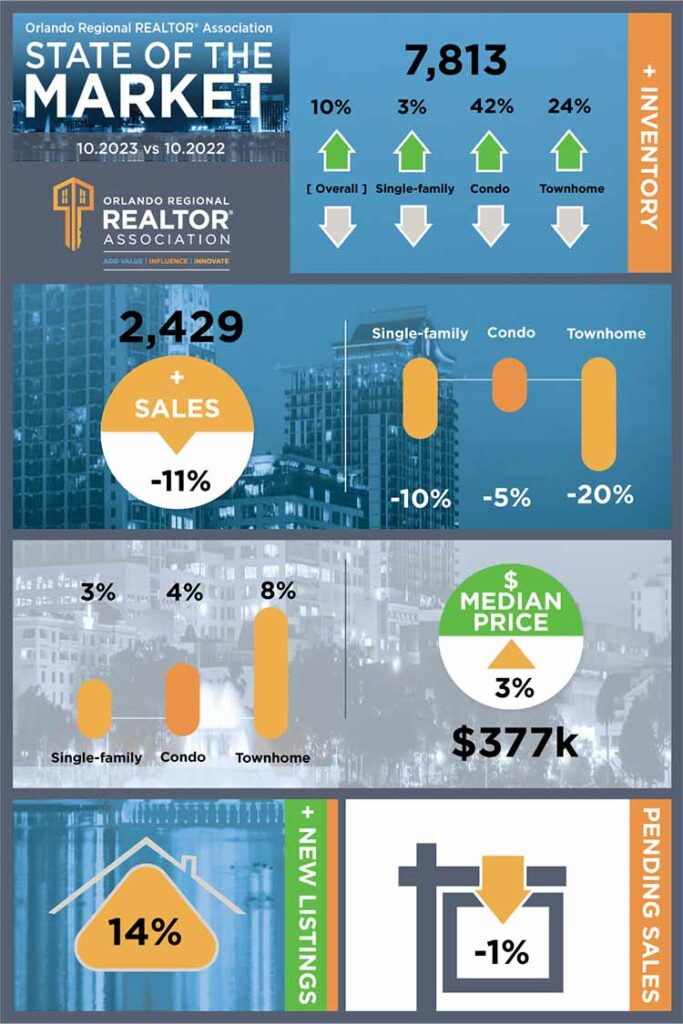Orlando State of the Market June 2024
July 17th, 2024 by tisnerNew Orlando Regional REALTOR® Association data shows record median home price for second time this year.
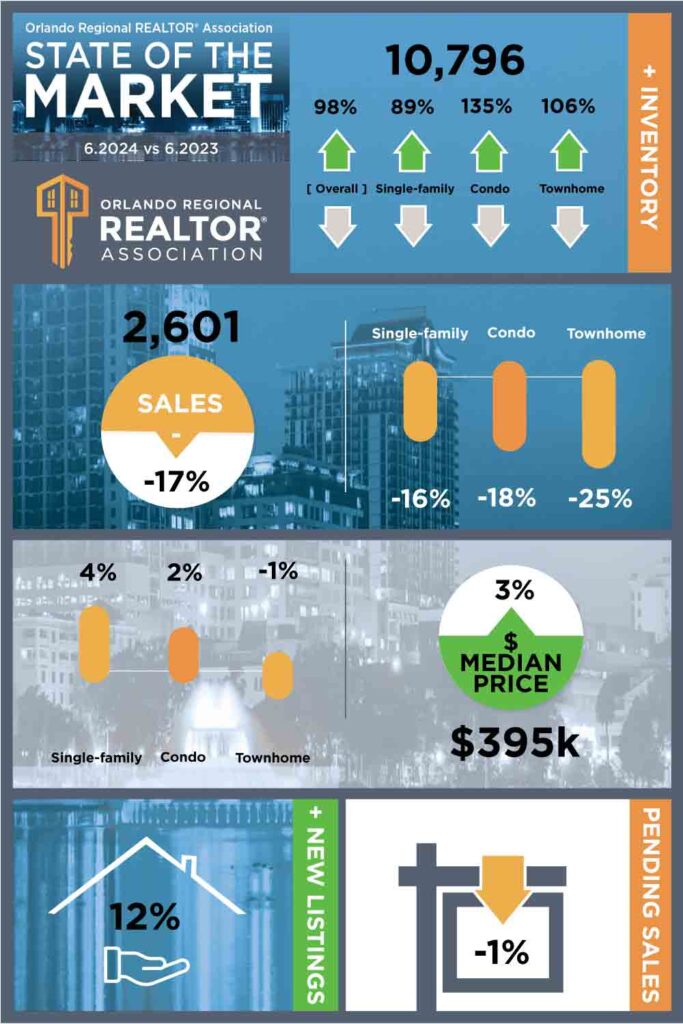
State of the Market
- The median home price for June was recorded at $395,000, up from $385,000 in May. This is the highest monthly median home price on record in the Orlando area. This is the second time in 2024 the record has been broken.
- Inventory for June was recorded at 10,796, up 5.0% from May when inventory was recorded at 10,282. This is the sixth month in a row inventory has risen. The last time inventory was this high was November 2015.
- Overall sales fell 10.6% from May to June. There were 2,601 sales in June, down from 2,909 sales in May. This breaks a four-month streak of rising sales.
- June’s interest rate was recorded at 6.7%, up from 6.6% in May.
- Pending sales fell by 8.3%, with 4,298 in May and 3,940 in June.
- New listings fell 8.4% from May to June, with 4,143 new homes on the market in June, compared to 4,521 in May.
- Homes spent an average of 54 days on the market (DOM) in June – the same as in May and April.
- “Demand in the Orlando market is holding strong this summer, as evidenced by yet another record-breaking median home price in June,” said Rose Kemp, Orlando Regional REALTOR® Association President. “The good news for buyers is that we are continuing to see inventory rise. More inventory gives buyers more options and more power to negotiate with the seller in the home-buying process.”
Market Snapshot
- Interest rates rose from 6.6% in May to 6.7% in June.
- Pending sales fell 8.3%, with 4,298 in May and 3,940 in June.
- 25 distressed homes (bank-owned properties and short sales) accounted for 1.0% of all home sales in June. That represents a 47.1% increase from May when 17 distressed homes sold.
Inventory
- Orlando area inventory increased 5.0% from May to June. Inventory in May was 10,282, and inventory in June was 10,796.
- The supply of homes rose to 4.15 months in June, up 17.4% from 3.53 months in May. A balanced market is six months of supply.
- The number of new listings decreased from May to June by 8.4% – from 4,521 homes to 4,143 homes.
You can find ORRA’s full State of the Market Report for May here.
This representation is based in whole or in part on data supplied by the Orlando Regional REALTOR® Association and the Stellar Multiple Listing Service. Neither the association nor StellarMLS guarantees or is in any way responsible for its accuracy. Data maintained by the association or by StellarMLS does not reflect all real estate activity in the market. Due to late closings, an adjustment is necessary to record those closings posted after our reporting date.
ORRA REALTOR® sales represent sales involving Orlando Regional REALTOR® Association members, who are primarily – but not exclusively – located in Orange and Seminole counties. Note that statistics released each month may be revised in the future as new data is received.
Orlando MSA numbers reflect sales of homes located in Orange, Seminole, Osceola, and Lake counties by members of any REALTOR® association, not just members of ORRA.
Access Teri’s one-stop Orlando FL home search website.
Teri Isner is the team leader of Orlando Avenue Top Team and has been a Realtor for over 24 years. Teri has distinguished herself as a leader in the Orlando FL real estate market. Teri assists buyers looking for Orlando FL real estate for sale and aggressively markets Orlando FL homes for sale.
You deserve professional real estate service! You obtain the best results with Teri Isner plus you benefit from her marketing skills, experience and ability to network with other REALTORS®. Your job gets done pleasantly and efficiently. You are able to make important decisions easily with fast, accurate information from Teri. The Orlando Avenue Top Team handles the details and follow-up that are important to the success of your transaction.






